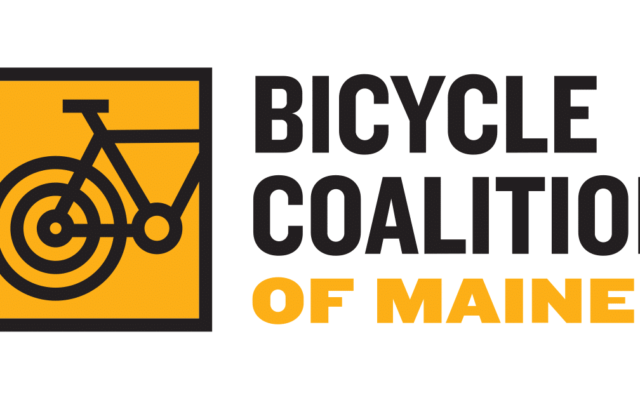
Here’s what you can do to keep pedestrians and cyclists safe
By Jean Sideris
Last year on Dec. 8, I wrote a press release in response to two pedestrians killed while walking on Maine roads. This year, on Dec. 8, I wrote a press release in response to two pedestrians killed while walking on Maine roads.
It is a tragic and heart wrenching reminder that our roads continue to be unsafe, especially for people biking or walking.
When I see a news report about a person injured or killed while biking or walking, I often feel helpless. What can I do? Could it have been prevented? What will it take to make our roads safe for everyone?
As the executive director of the Bicycle Coalition of Maine, I feel privileged knowing my job is to make Maine safer for people biking and walking. But, when someone is injured or killed, it feels like I am not doing enough. Change is slow.
Yes, we need more bicycle and pedestrian facilities. Yes, we need to prioritize active transportation options. Yes, we need to design our roads and streets for all users. Yes, we need to slow down and pay attention while driving.
But transformative change takes time. And calls for personal responsibility all too often get stuck in the blame game – drivers should slow down, people walking and biking should wear bright colors. Responsibility for safe roads is shared by all users, absolutely, but I argue that responsibility is not shared equally.
Of course everyone walking or biking must follow the rules of the road and do what they can to be visible, but a larger portion of responsibility must be on those encased in a 3,000-pound steel container designed to keep the people inside — not outside — the vehicle safe. A vehicle can quickly, without malice or intent, become a deadly machine. Walking to work or school, or taking your dog for a walk, should not be life-threatening activities.
The number of pedestrian fatalities reached a high in 2021 and as we come to the end of 2022, the numbers continue to rise, with 20 pedestrians and two bicyclists killed on Maine roads, according to the Maine Department of Public Safety. There is no single reason for this, and it is likely a combination of factors: more speeding, more distracted driving, and more people out walking, to name a few. Nevertheless, we must face those facts and increase efforts to put us on a path to a transportation future that is safe for all users.
While we work toward long-term change, it is important to remind ourselves that there are things we can do now to effect change and set the stage.
Here are seven things you can do today to keep pedestrians and cyclists safe:
Contact your city councilor, state representative, state senator, governor, and members of Congress to make sure they know you want action or forward them a relevant news article and ask them to invest in safer roads.
Write a letter to the editor in your local newspaper. Keep the conversation going past the news article of the day.
Share stories about these crashes on social media, and consider tagging your elected officials so they see it.
Join (or start!) a local bike/ped committee in your town.
When driving: Drive at or below the speed limit, pay attention, never drive distracted or impaired, and model that behavior for others.
When biking or walking: Obey laws, be visible, and set an example for others.
Get involved with the Bicycle Coalition of Maine by becoming a Community Spoke – a network of local advocates across the state–volunteer, attend an event, or donate.
We cannot change our transportation system overnight, but we can demand change and continue to raise awareness today.
Sideris is the executive director of the Bicycle Coalition of Maine.